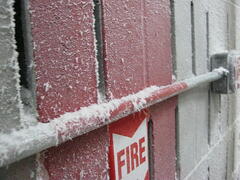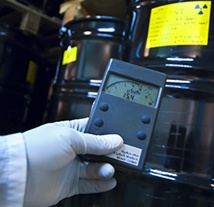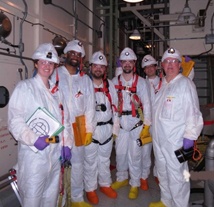
Environmental Health and Safety (EHS) and Industrial Hygiene (IH) professionals are familiar with the need for environmental testing when it comes to dust. However, what is not clear is whether the tests and controls put in place for good hygiene address the explosive hazards associated with the dust. Where do they start? Are the tests similar? If a dust is declared safe to breathe in measureable amounts, does that mean it is not explosible? How can someone determine if they have a risk? This post explores how the common requirements for the Occupational Safety and Health Administration (OSHA)’s hygiene controls for respirable dust and total dust content relate (or don’t) to combustible dust testing. We conclude by showing how a Process Hazards Analysis (PHA) is an important tool for managing and handling both questions comprehensively.
First, let's look at hygiene regulations from the National Institute for Occupational Safety and Health (NIOSH) 0500. This standard addresses “nuisance dusts; particulates not otherwise regulated/classified TOTAL DUST. Likewise, NIOSH 0600 addresses “nuisance dusts; particulates not otherwise regulated/classified, RESPIRABLE DUST.”
A customer recently asked whether their facility was operating within a safe range. This question came up because they had tested their dust per the NIOSH hygiene 0600 respirable dust regulation and found that the dust in the facility had a concentration of 90mg per m³. They then compared this measurement from their facility with the Minimum Explosible Concentration (or MEC) of the dust. The MEC tells what the smallest concentration of dust is that can post an explosion risk. The MEC showed that the MEC for the dust in question was 90-100 g/m3. The test data gives two conclusions.
One, the 90 mg/m3 is much greater than the 5 mg/m³ quantity required by the Occupational Health and Safety Administration (OSHA). This indicates that there are concerns that need to be addressed from a hygiene perspective.
Second, from an explosivity standpoint – the MEC test reveals that the client is operating at a level that is safely below the MEC. However, how can the client be sure that this is sufficient? A recognized method to determine what safe handling and processing requirements are for the dust (and to see what other testing may be required), is to conduct a process hazards analysis (PHA).
A PHA is a systematic evaluation of the hazards involved in the process. Per OSHA, a PHA is required any time a new process is initiated in a facility, and should be conducted on existing processes at least once every five years after that. PHA’s are important because they systematically address normal operating conditions as well as start-up, routine cleaning, normal shut down and emergency shutdown procedures. Understanding these conditions is essential for determining what safe operating conditions should be, and are helpful in determining what combuistible dust tests are needed to provide the data to safely design those conditions and protect equipment. The PHA team should be multi-disciplinary, including operations, engineering and maintenance. To properly conduct a PHA, the process safety information (PSI) must be as complete as possible including dust explosibility characteristics of the material as well as the equipment handling the dust.
Safety testing and engineering firms such as Fauske & Associates, LLC (FAI) provide PHA services including for compliance to OSHA PSM requirements as well as combustible dust related PHAs for compliance per National Fire Protection Association (NFPA) guidelines: NFPA 654, NFPA 664 and NFPA 484. FAI facilitators serve as subject matter experts for reactive chemical hazards as well as combustible dust to identify risk reduction strategies appropriate for the hazards identified.
Tests required for thorough assessment of combustible dusts are part of the all-important PHA. A PHA in this customer's case required a Kst (Explosion Severity Test), MIE (Minimum Ignition Energy Test), MEC, and MIT (Minimum Autoignition Temperature of a Dust Cloud Test) to quantify the explosibility rates and conditions of this combustible dust.
A PHA should be part of a facility's risk management plan to identify hazards that could lead to a fire, explosion or toxic release. So, be sure to look for a testing lab that responds to rapidly growing safety needs in the chemical and industrial industries by offering a complete range of Risk Management Services including Combustible Dust Explosion and Fire Hazard Evaluation, Process Hazard Analysis (PHA), Hazard Identification Risk Analysis,Consequence Analysis, Safer Process Scale-up, Process Safety Program Development, Fire Protection Engineering, and Relief System Design Review.
For more information regarding process safety management (PSM), process hazard analysis (PHA) and evaluation, risk management services or combustible dust testing questions or needs, contact Jeff Griffin at griffin@fauske.com or 630-887-5278. www.fauske.com.










